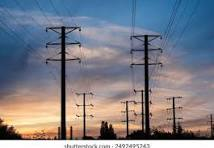Why Electricity Bills Are Rising Globally

“U.S needs to generate more electricity” to bring down costs -Matthew Yglesias

Electricity bills are rising globally due to a combination of factors including increased energy demand, rising fuel costs, and changes in weather patterns. Additionally, aging and inefficient appliances, poor insulation, and inefficient lighting contribute to higher energy consumption and subsequently, higher bills.
Daily increase in population globally requires more energy for basic needs like lighting, heating, and cooling. The developed and developing countries in the world consume more energy due to industrialization, urbanization and increase in energy-consuming appliances such as air conditioners, electric cooker, Refrigerators, Electric Iron, electric heaters and charging devices, electric vehicles and other technologies, warmers in cold temperate regions during winter in some regions.
Rise in the cost of fossil fuels like coal, oil, and natural gas, which are still the primary sources of electricity generation in many regions, has been increasing due to supply and demand dynamics, geopolitical factors, and other market forces. Renewable energy sources like solar and wind are becoming more expensive and competitive, the cost of building and maintaining renewable energy infrastructure can still contribute to overall energy costs, especially during the initial phases of transition.
Aging electricity infrastructure in the power value chain leads to less efficient in generating, transmitting and distributing electricity as it leads to higher losses and increased costs.

Insufficient investment in upgrading or expanding electricity infrastructure can lead to bottlenecks and higher costs, especially during peak demand periods due to less capacity across the electricity value chain.
Other reasons may include, Older appliances are often less energy-efficient than newer models; Inefficient insulation in buildings can lead to significant energy losses; More energy for heating and cooling; Leaving chargers and other electronic devices plugged in when not in use; Some utility companies charge higher rates during peak demand periods.
The rising electricity bills across the U.S. is driven by the costs of aging electrical infrastructure and surging demand from data centers that power artificial intelligence. And the bottom line for American households is creeping upward with no end in sight.

Electricity bills are “rising even faster than the cost of groceries,” said The Wall Street Journal. While overall consumer prices rose 2.4% year-over-year in May, power costs increased 4.5% during the same period, and federal officials expect this summer’s air-conditioning bills to be 4% higher than last year. That is largely due to a “jump in natural-gas prices,” though grid upgrades and data centers also factor into the hike. The rise in power costs began about the same time Russia’s invasion of Ukraine started driving up the price of natural gas, which is the “largest source of power generation.”

Those growing costs have “Americans worried,” said Canary Media. A recent poll showed that nearly three-fourths of respondent’s report “feeling concerned about rising utility bills.” The people who pay those bills are “hurting and they’re stressed out,” said Charles Hua, the executive director of advocacy group PowerLines.
Opinions of Commentators say?
The country “needs to generate more electricity” to bring down costs, said Matthew Yglesias at Bloomberg. But President Donald Trump’s budget bill, currently in the Senate, “would have the opposite effect” by undercutting new solar and wind installations and “undermining the hope” for innovations in geothermal and nuclear power. Getting rid of tax credits for clean energy will make it more difficult to generate more electricity and to bring the price down. “The math does not add up.”
AI data centers with the “electricity needs of a small city” are “gobbling up” America’s supply of electricity, said Matthew Kandrach at Deseret News. PJM Interconnection, which runs the nation’s largest electrical grid, estimates that data center power demands “will equal the electricity needs of 20 million homes” by 2030. That’s “putting immense pressure” on the costs paid by American households. Tech companies should do more to “ensure we have the energy affordability” that will be needed to create the future they envision.
What next?
Some solutions are coming at the state level. In Maryland, Gov. Wes Moore (D) announced a $19 million relief fund last week for “limited- and middle-income customers,” said CBS News. Marylanders frequently voice their “real and justified concerns over steep bill increases,” he said. And they will need the help. It’s “going to be another expensive summer for air conditioning,” said economist Mark Wolfe to the network.
The average home electricity bill is expected to be $784 this summer. The hotter it gets, the higher the prices will go. It will be an ongoing problem. When power bills go up, said Wolfe, they “tend to stay high.”
theweek.com






